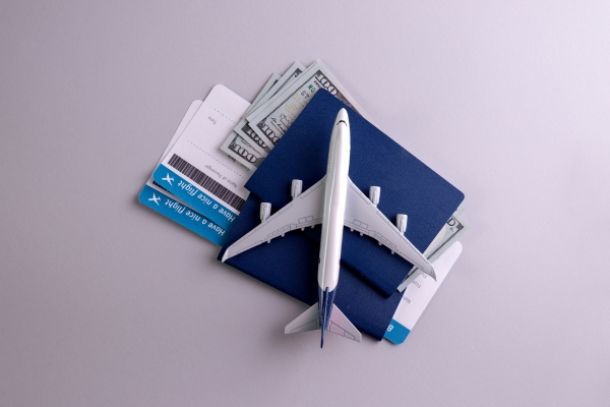Airline loyalty programs have become a cornerstone of modern travel, promising rewards like free flights, upgrades, and exclusive perks. But with so many programs available, the question remains: are they really worth it? In this article, we’ll explore how loyalty programs work, weigh the pros and cons, and offer practical tips for maximizing their benefits to determine if they’re the right choice for your travel style.
How Airline Loyalty Programs Work
Airlines design loyalty programs to reward frequent flyers by awarding points or miles for every dollar spent on flights. These points can later be redeemed for various rewards, such as:
- Free Flights and Upgrades:
One of the most attractive perks is the ability to use points to fly for free or upgrade from economy to business class. - Priority Services:
Elite members often enjoy benefits like priority check-in, boarding, and extra baggage allowances, which enhance the overall travel experience. - Exclusive Offers:
Members may receive access to special promotions, partner deals, and bonus point events that are not available to non-members.
Programs are typically tiered, meaning the more you fly with a particular airline, the higher your status and the better your rewards become. Elite status can unlock even more exclusive benefits, such as lounge access and guaranteed seat availability on fully booked flights.
Pros of Joining Loyalty Programs
- Reward Accumulation:
For frequent travelers, loyalty programs can translate travel spending into valuable rewards. Even infrequent flyers may benefit from occasional bonus promotions and partner offers. - Enhanced Travel Experience:
Upgrades, extra legroom, and priority services can make long journeys much more comfortable. Many travelers find that these benefits help offset the stress of travel. - Cost Savings:
Free flights and discounted upgrades can lead to significant savings over time. When used strategically, loyalty points can cover a large portion of travel expenses. - Access to Exclusive Deals:
Airlines often offer members-only discounts, early access to sales, and unique travel packages. This can be particularly advantageous during peak travel seasons when standard fares are high. - Partnership Benefits:
Many loyalty programs are part of larger alliances or have partnerships with hotels, car rental companies, and credit card issuers. This means you can earn and redeem points across multiple travel services, increasing the program’s overall value.
Cons of Airline Loyalty Programs
- Limited Flexibility:
Points are usually non-transferable between programs and are only valid for a specific airline or alliance. This can restrict your choices if you fly with different carriers. - Changing Program Rules:
Airlines can change the terms and conditions of their loyalty programs at any time, which might reduce the value of your points. This unpredictability can be frustrating for dedicated travelers. - High Thresholds for Elite Status:
Achieving and maintaining elite status often requires a high volume of travel. For occasional flyers, the effort may not be worth the reward. - Expiry of Points:
Some programs have expiration policies, meaning you could lose your hard-earned points if you don’t use them within a specified period. This necessitates careful planning and regular travel. - Hidden Fees:
In some cases, booking award flights or upgrades may come with additional fees and surcharges that reduce the overall benefit of the rewards.
Maximizing the Value of Loyalty Programs
If you decide to join an airline loyalty program, here are some strategies to maximize its benefits:
- Choose Programs Aligned with Your Travel Habits:
Research which airlines and alliances best match your travel routes and preferences. If you primarily travel domestically, choose a program with a strong domestic network; if you often fly internationally, look for programs that are part of global alliances. - Leverage Co-Branded Credit Cards:
Many airlines offer co-branded credit cards that provide generous sign-up bonuses and accelerated point earnings on purchases. These cards often include benefits like free checked bags or priority boarding, which add extra value. - Plan Award Travel Strategically:
Award availability can be limited, especially for premium cabins. Be flexible with your travel dates and consider booking well in advance (or even last minute) to maximize your chances of finding award seats. Some programs allow one-way redemptions, which can offer added flexibility. - Monitor Promotions and Bonus Events:
Stay subscribed to airline newsletters and follow their social media channels to catch bonus point promotions, limited-time offers, and flash sales. Taking advantage of these events can significantly boost your point balance. - Use Partner Programs:
Look for opportunities to earn points through hotel stays, car rentals, dining programs, and even everyday shopping. These additional avenues can help you accumulate rewards faster. - Be Mindful of Program Changes:
Keep track of any updates or changes to your loyalty program. Being aware of changes can help you plan your redemptions before point devaluation occurs.
Final Thoughts
Airline loyalty programs can be a valuable asset for frequent travelers, offering a range of benefits that enhance the travel experience and provide cost savings. However, they’re not a one-size-fits-all solution. The decision to join and actively participate in a loyalty program depends largely on your travel frequency, preferred routes, and willingness to navigate the complexities of points accrual and redemption. By carefully selecting a program that aligns with your needs and maximizing its benefits through strategic planning and smart usage, you can make loyalty programs work to your advantage—and potentially turn your travel expenses into valuable rewards.


